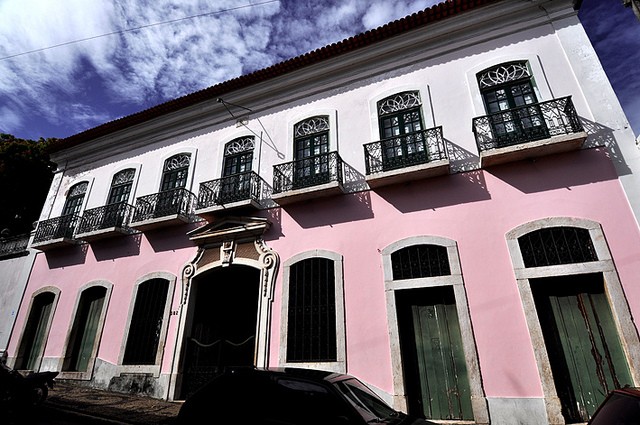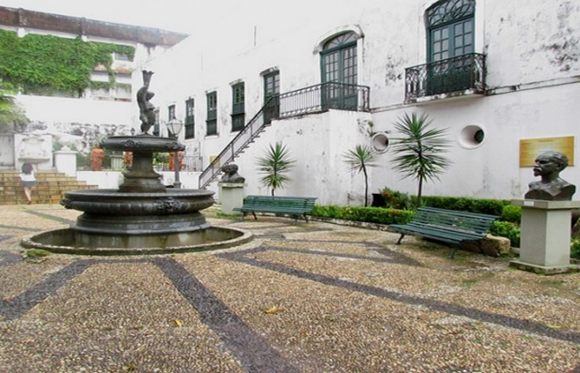Historical and Artistic Museum of Maranhão
If you want to learn about the way of life of the wealthy families of São Luís in past centuries, their customs, habits and curiosities, don’t miss a visit to the Maranhão Historical and Artistic Museum.
Housed in a 19th-century manor house, the museum reconstructs the dwellings of a São Luís that has remained in time. With a rich collection of around 10,000 pieces, the museum was inaugurated on 28 July 1973, the date on which Maranhão joined Brazilian Independence.

In the house, you can keep in touch with a city that no longer exists. “We have designed the museum to give you a sense of how families lived and worked in those days,” says Conceição Monteiro Ribeiro, who is in charge of the museology department.
When you arrive at the mansion, you are immediately struck by the exuberance of the property. Built with materials brought from the Itapecuru Valley by the farmer José Inácio Gomes de Sousa, who built the manor in 1836, the house retains most of its original features. “Of course, we had to adapt some of the rooms that house the museum’s administration, but the property is practically original,” says Conceição Ribeiro proudly.
The ground floor houses the garden, entrance hall, shop, monitoring room and administration headquarters, as well as the Apolônia Pinto Theatre. On the upper floor, the 14 rooms include a living room, a music room, a double bedroom, a girls’ bedroom and a boys’ bedroom, as well as a kitchen and a sewing room.
The Hall of Entrance on the ground floor, which was used as a distribution point between the different parts of the house and as a shelter for vehicles such as carriages, also houses the staircase leading to the Hall of Reception of the house. The U-shaped plan divided the building into wings: the social wing, designed to receive visitors and less intimate people; the intimate wing, made up of bedrooms and dressing rooms; and the service wing, made up of the kitchen, storerooms and niches.
This distribution was exclusive to the first floor, since the ground floor was reserved for the service and circulation of the slaves, with the exception of the theatre, a distinctive feature of the property, where Arthur Azevedo rehearsed some of his plays. The space was named the Apolônia Pinto Theatre after the first lady of Maranhão theatre. There is also a fountain on the site.
In 1857, Mr Alexandre Colares Moreira, one of the owners of the manor, bought the land next door and opened doors and windows to access it, transforming it into a beautiful garden. Today, the site contains sculptures of Greek gods and a fountain that was removed from the Avenida Silva Maia (centre).
Video about the Historical and Artistic Museum of Maranhão


Museu Histórico e Artístico do Maranhão - Parte 111:10

Museu Histórico e Artístico do Maranhão - Parte 210:28

Museu Histórico e Artístico do Maranhão - Parte 314:10
Collection of the Historical and Artistic Museum of Maranhão
The museum’s collection is very diverse and includes many pieces of historical and cultural interest. Some of the most important pieces in the collection are
- Spittoons or spittoons – Used for the disposal of saliva, representing an aspect of the hygiene and customs of the time.
- Throne chair – A portable toilet used before the introduction of indoor toilets in homes.
- Rocking Cradle – An example of children’s furniture from this period.
- Porcelain – Includes French, Portuguese and English pieces.
- Sewing machines – Hand-cranked models reflecting the technology of the 19th century.
- Furniture of the First Half of the 19th Century – Includes various pieces of furniture that characterise the décor and lifestyle of wealthy families.
- Wooden Bookcase – A gift from the then President of Argentina, Júlio Roca, with carved drawings depicting tourist attractions in São Luís and Buenos Aires.
- Manuscripts – Such as the second edition of Aluísio de Azevedo‘s “O Mulato” and Graça Aranha‘s “Malazarte“.
- Sheet music and a Violin – which belonged to the writer Dunshe de Abranches.
- Tiles of various origins, a numismatic collection, glass, crystal, paintings, sculptures, engravings, Catholic religious art, art of African origin and a documentary collection.
When designing the space, the organisers were inspired by novels that describe the way of life of Maranhão families, such as “O Mulato” by Aluísio de Azevedo. Some of the rooms are based on passages from the book, such as the kitchen.
Visit:
Museu Histórico e Artístico do Maranhão
Where: Rua do Sol, 302, Centro
Visit: Tuesday to Sunday, 9am to 6pm
Tourist Guide to São Luís do Maranhão and the Northeast
Publicações Relacionadas
História da Igreja de São José do Desterro em São Luís do Maranhão
Church of Our Lady of Victory: Historical Significance
Convento das Mercês: Historical Significance Unveiled
History of João Lisboa Square in São Luís do Maranhão
Ribeirão Fountain: A Historical Landmark in São Luís
João do Vale Theatre and Its Rich History
Tiles from São Luís do Maranhão: History, Art and Heritage
Rua do Giz in São Luís do Maranhão - History and Architecture
Casa de Nhozinho: A Journey Through Maranhão Culture
Discover the Charm of São Luis: Top Tourist Attractions
Maranhão Natural History and Archaeology Research Centre
Arthur Azevedo Theatre and its Rich History
History of the Founding of São Luís do Maranhão
La Ravardière Palace: A Historic Monument in the City
This post is also on:
Português
English
Deutsch
Español
Français



















